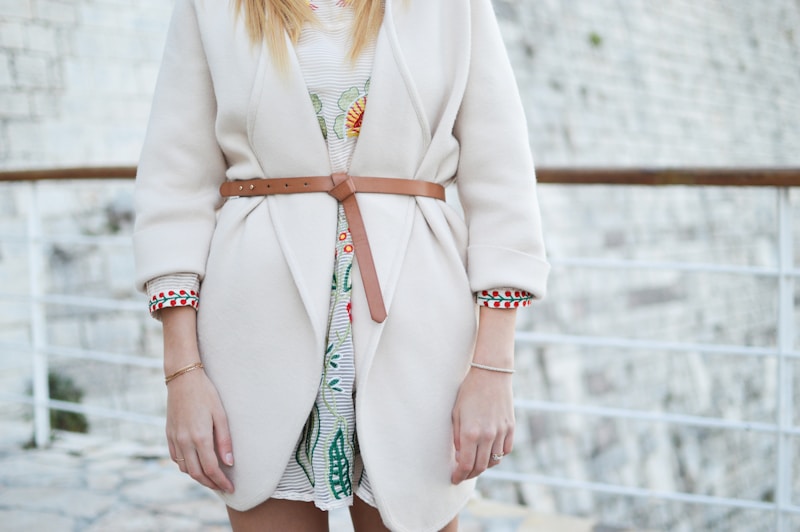Understanding Your Unique Body Proportions: The Ultimate Guide to Self-Acceptance and Style
Introduction to Body Proportions
In a world that continuously bombards us with images of ideal beauty, understanding your unique body proportions is essential for self-acceptance and personal style. Each individual's body is distinct, with its proportions defining how clothing and styles fit and flatter. This article aims to explore how to understand your body proportions, how they relate to fashion choices, and practical tips to enhance your style accordingly.
What Are Body Proportions?
Body proportions refer to the relative measurements of different sections of the body. Key areas commonly analyzed include the shoulders, bust, waist, hips, and legs. By understanding your proportions, you can highlight your strengths and choose clothing that enhances your appearance.
The Importance of Knowing Your Body Type
Knowing your body type can transform your wardrobe and boost your confidence. Whether you are an hourglass, pear, apple, or athletic body type, understanding your proportions can help you:
- Select flattering clothing: Choose styles that enhance your natural shape.
- Boost self-esteem: Appreciate your uniqueness and learn to work with it.
- Avoid fashion faux pas: Prevent ill-fitting clothing that distracts from your natural beauty.
How to Measure Your Body Proportions
To understand your unique body proportions, you’ll need to take a few simple measurements. Here’s how to do it:
- Bust: Measure around the fullest part of your bust.
- Waist: Measure around the narrowest part of your waist, usually just above the belly button.
- Hips: Measure around the fullest part of your hips.
- Shoulder Width: Measure from the edge of one shoulder to the edge of the other.
Once you have these measurements, you can categorize your body type and start experimenting with different styles.
Understanding Different Body Types
Each body type has its own proportion characteristics, which can guide your style choices.
| Body Type | Characteristics | Style Tips |
| Hourglass | Balanced shoulders and hips with a defined waist. | Emphasize your waist with fitted styles and choose bold colors. |
| Pear | Wider hips compared to shoulders; smaller bust. | Opt for A-line skirts and structured tops to balance proportions. |
| Apple | Broader shoulders and bust with narrower hips. | Choose flowy tops to conceal the waist and create a balanced silhouette. |
| Athletic | Straight, muscular build with less defined curves. | Feminine cuts and layered pieces can create curves and add softness. |
Tips for Dressing According to Your Body Proportions
Once you understand your unique body proportions, it's time to enhance your personal style! Here are some practical tips:
1. Focus on Fit
Your clothing should fit well. Avoid wearing oversized pieces that hide your shape. Instead, opt for well-tailored clothing that enhances your body lines.
2. Choose the Right Fabrics
Fabric choice matters! Soft materials can drape elegantly, while stiffer fabrics can add structure. Cotton blends, jersey, and silk can be more forgiving and flattering for various body types.
3. Use Color and Patterns Wisely
Dark colors tend to slim, while lighter colors can emphasize specific areas. Utilize patterns to add dimension or draw attention away from areas you may want to downplay.
Accessorizing for Your Body Proportions
Accessories can elevate your outfit and should complement your body type. Consider the following:
- Belts: Great for highlighting your waist.
- Statement Jewelry: Bold pieces can draw attention to the face and balance your proportions.
- Scarves: Can add volume or draw attention to your neck and shoulders.

Common Questions Related to Body Proportions
1. How can I find my body type without measurements?
If you don't have measuring tools handy, you can visually compare your proportions to common body type categories. Assess the differences in waist definition, shoulder width, and hip size against body type descriptions to gauge where you fit.
2. Can I dress my body type differently if I want?
Absolutely! Fashion is about self-expression. While understanding your body type can guide your choices, feel free to experiment with styles that resonate with you, regardless of traditional categorizations.
3. Are body proportions affected by weight loss or gain?
Your body proportions can change with fluctuations in weight. Regularly reassess your measurements and adapt your style as needed to ensure you feel and look your best.
Conclusion: Embracing Your Unique Body Proportions
Understanding your unique body proportions is not merely about fitting into the latest trends; it’s about embracing who you are. With this newfound knowledge, you can make more informed fashion choices that highlight your unique shape, enhance your confidence, and cultivate a sense of personal style.
As you explore your body proportions, remember to celebrate your individuality. Try different styles, play with colors, and discover what makes you feel fabulous! Knowing your body type can open many exciting avenues in fashion that honor and showcase your uniqueness while ensuring you carry yourself with confidence.
Takeaway: Understanding and accepting your body proportions is the first step toward a more satisfying and confident wardrobe. Utilize the measurements you take, experiment with styles that flatter your shape, and remember that fashion is about your personal expression.